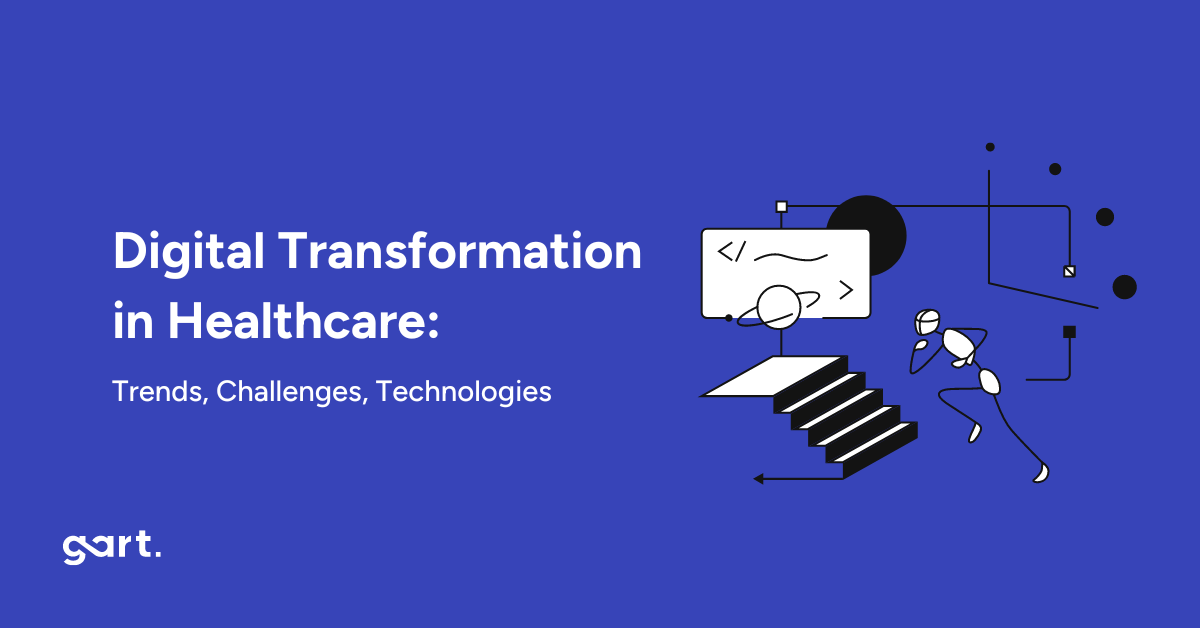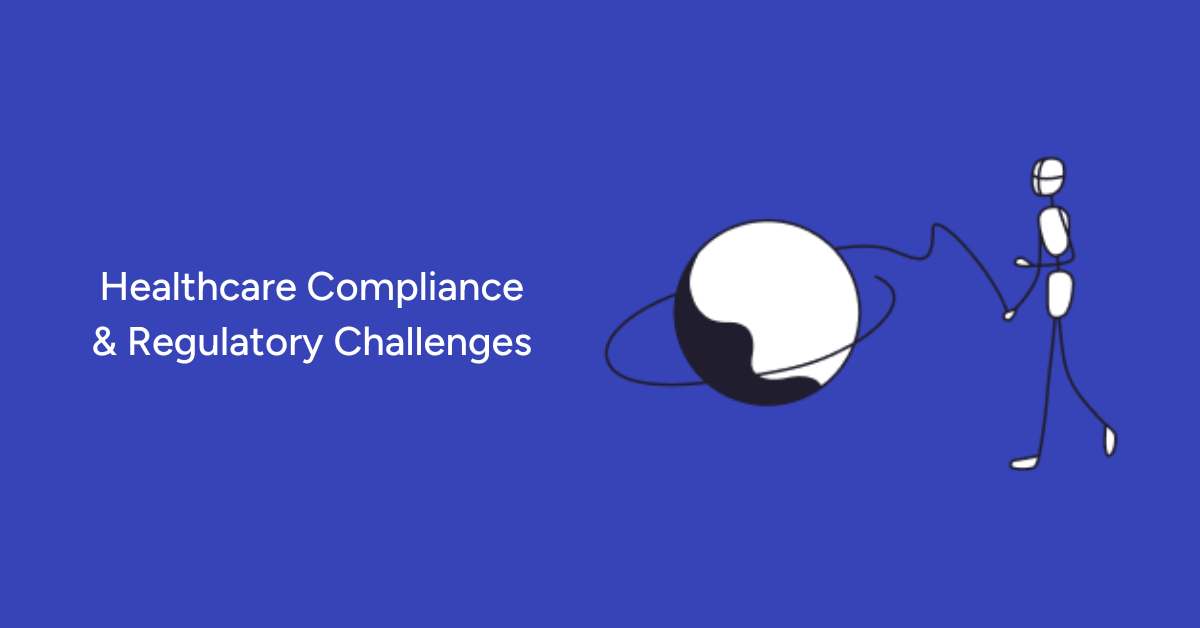- What is Digital Transformation in Healthcare?
- Key Drivers of Digital Transformation in Healthcare
- Benefits of Digital Transformation in Healthcare
- Challenges to Healthcare Digital Transformation
- Successful Cases of Digital Transformation in Healthcare
- How Digital Transformation Enhances Patient Experience
- Conclusion
What is Digital Transformation in Healthcare?
Imagine walking into a hospital where your medical records are instantly accessible on a secure digital platform, doctors consult you virtually from anywhere, and AI systems analyze your blood tests to predict diseases before symptoms appear. That’s digital transformation in healthcare.
In simple terms, it refers to leveraging technology to revolutionize how healthcare is delivered, managed, and experienced. It involves integrating digital solutions like electronic health records (EHRs), telemedicine, AI diagnostics, IoT-connected devices, and robotic surgeries to improve patient care, operational efficiency, and medical outcomes.
Why is it Gaining Momentum Globally?
The COVID-19 pandemic accelerated healthcare digitization, but the momentum continues due to:
- Rising Patient Expectations:
Today’s patients demand convenience, accessibility, and personalized care, just like their experiences with Amazon or Netflix. - Technological Advancements:
AI, IoT, and big data analytics have matured, making them viable for large-scale healthcare applications. - Cost Pressures and Resource Constraints:
Hospitals face financial constraints and staff shortages. Digital transformation optimizes workflows, reducing costs while improving quality. - Regulatory Push:
Governments and health bodies globally are mandating secure digital health records, telemedicine, and interoperability standards to improve national healthcare systems.
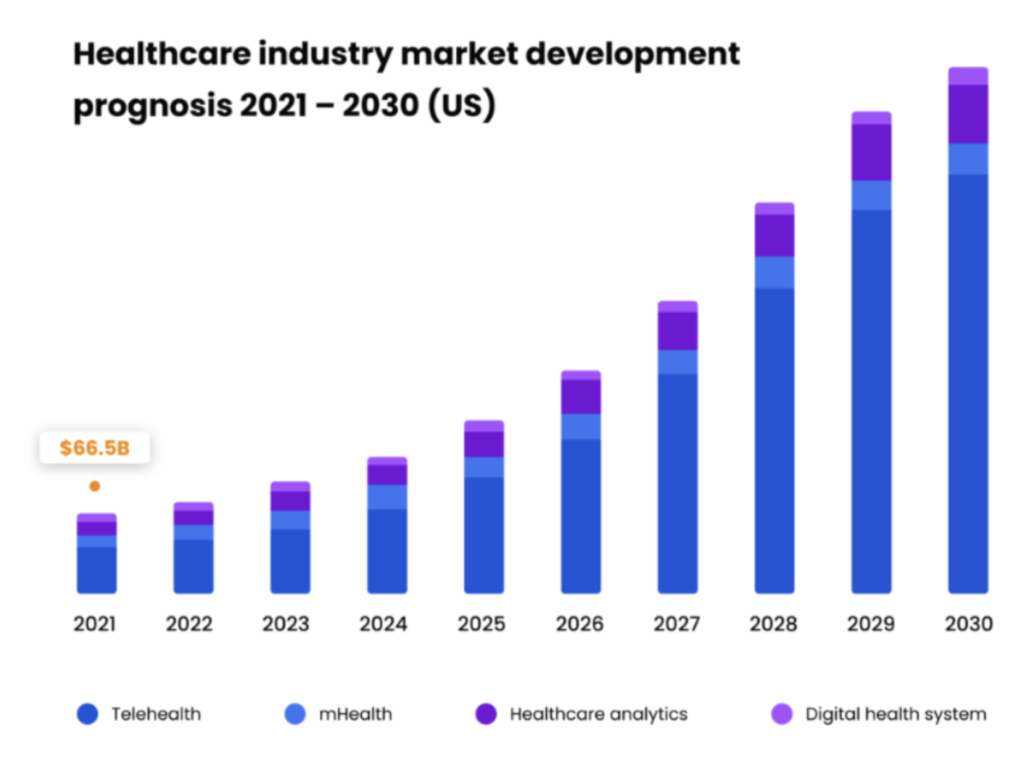
A Statista report projects the global digital healthcare market to reach $504.4 billion by 2025, underscoring how essential digital transformation has become for competitive and efficient healthcare delivery.
88% of healthcare technology leaders prioritize improving the patient experience in their investments (according to a Deloitte survey)
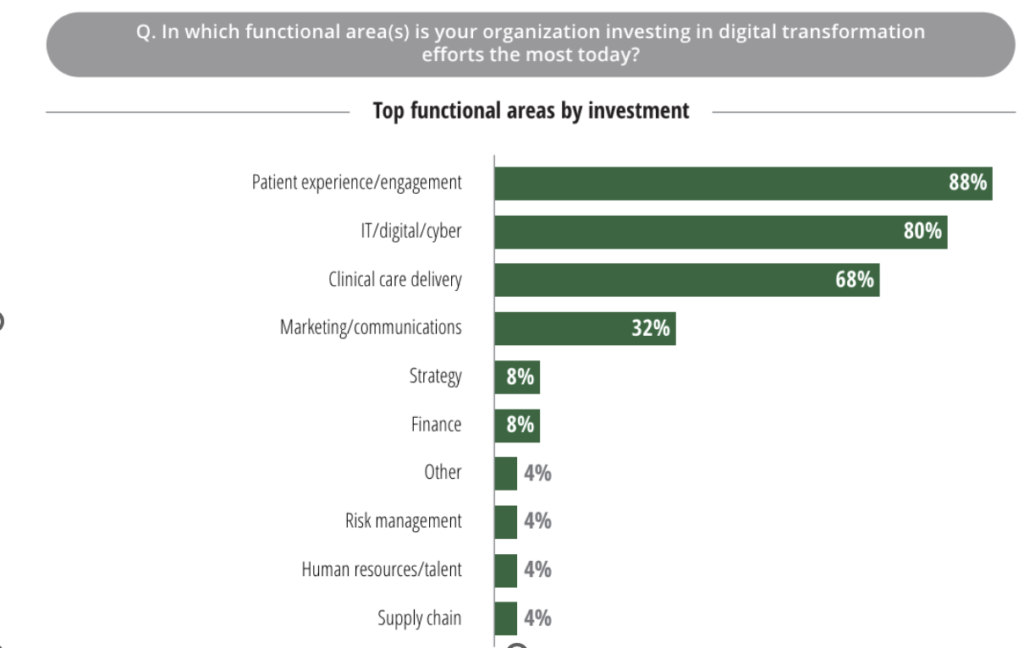
This shift underscores the necessity for healthcare professionals, including doctors, nurses, and administrative staff, to stay abreast of ongoing digital advancements.
Key Drivers of Digital Transformation in Healthcare
Emerging Technologies Shaping Healthcare
Technological innovations are the backbone of healthcare’s digital transformation. Here’s how the main technologies are driving change:
AI (Artificial Intelligence)
AI is revolutionizing healthcare by:
- Automating administrative tasks like record-keeping and billing
- Enhancing predictive diagnostics by analyzing medical images for early disease detection
- Personalizing treatment plans based on patient history, genetics, and lifestyle
- Enabling AI-powered chatbots to handle appointment scheduling, symptom checks, and medication reminders, reducing the burden on human staff
For example, AI diagnostic platforms like Google DeepMind Health detect eye diseases with the same accuracy as ophthalmologists, enabling earlier intervention and better outcomes.
IoT (Internet of Things)
IoT-connected health devices include:
- Wearables: Smartwatches and fitness trackers monitor heart rate, oxygen saturation, and sleep cycles, alerting users to anomalies.
- Remote Patient Monitoring Devices: Track vitals for chronic patients, reducing hospital visits while enabling proactive care.
- Connected Hospital Equipment: Optimize operations by tracking equipment usage, availability, and maintenance schedules.
This improves real-time patient monitoring, operational efficiency, and resource utilization, making healthcare delivery smarter and more responsive.
Robotics
Robotics in healthcare enables:
- Minimally invasive surgeries: Robotic surgical systems like da Vinci Surgical System enhance precision, reducing recovery time and hospital stays.
- Remote surgeries: Surgeons operate robotic instruments from distant locations, expanding access to specialized care globally.
3D Printing
3D printing is transforming:
- Prosthetics: Creating customized, affordable prosthetics quickly for amputees.
- Implants and Organs: Producing tailor-made implants and researching bioprinted organs for transplantation.
These emerging technologies are not just futuristic concepts – they are real-world solutions enhancing healthcare daily.
Changing Patient Expectations and Demographics
Today’s patients are digital natives, especially younger demographics who expect:
- Online appointment booking
- Access to digital medical records
- Telehealth consultations
- Personalized health recommendations
With over 5.3 billion internet users globally, healthcare providers must adapt to digital-first expectations to remain competitive and patient-centric, as the demand for digital healthcare services is rising.
Updated Regulations Driving Adoption
Governments worldwide are introducing regulations to support digital transformation:
- HIPAA (US): Mandates data privacy and security for protected health information (PHI).
- GDPR (EU): Enforces strict data protection rules for personal data, including health records.
- ISO/IEC 27799: Provides guidelines for information security management in healthcare.
Compliance with these standards is not optional. Healthcare providers must adopt digital solutions with built-in security and privacy measures to avoid legal repercussions and build patient trust.
Gart guides you through every step of the compliance process, providing the expertise, tools, and support you need. Contact Us.
Benefits of Digital Transformation in Healthcare
1. Reduced Costs – automating administrative tasks and other processes allows healthcare providers to save time and money while enhancing patient care. Through digital transformation, workflows are streamlined, and operational efficiency is increased, which helps reduce overhead costs.
2. Optimized Workflow – digital transformation has enabled healthcare providers to optimize their workflows. Automating tasks like patient information management and appointment scheduling allows medical staff to focus more on delivering effective patient care. Additionally, digital tools such as AI-powered chatbots can handle simple patient interactions, reducing the burden on physicians.
3. Enhanced Patient Interaction – digital transformation has empowered healthcare providers to interact with patients more effectively. Innovative technologies enable health professionals to easily access patient records, aiding in better diagnosis and treatment. Moreover, digital solutions like telemedicine allow doctors to offer timely medical advice even when they are not physically present at the hospital or clinic.
4. Improved Administration – digitizing processes makes managing administrative tasks more efficient for healthcare organizations. Automation of activities like scheduling appointments, filing insurance claims, and maintaining accurate financial records reduces manual errors while improving accuracy and speed.
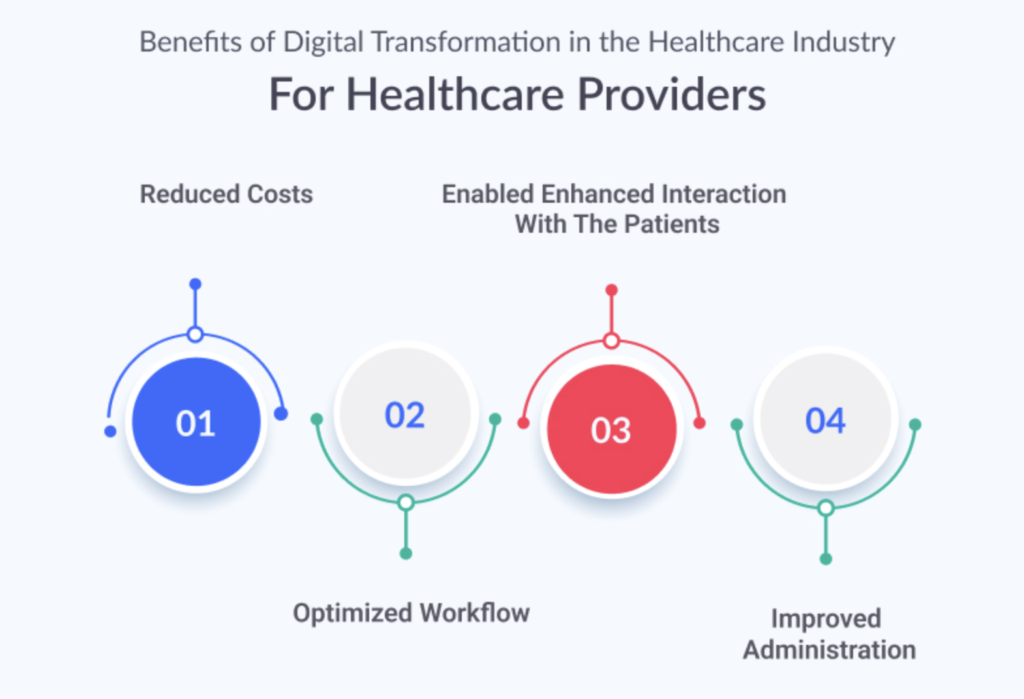
Challenges to Healthcare Digital Transformation
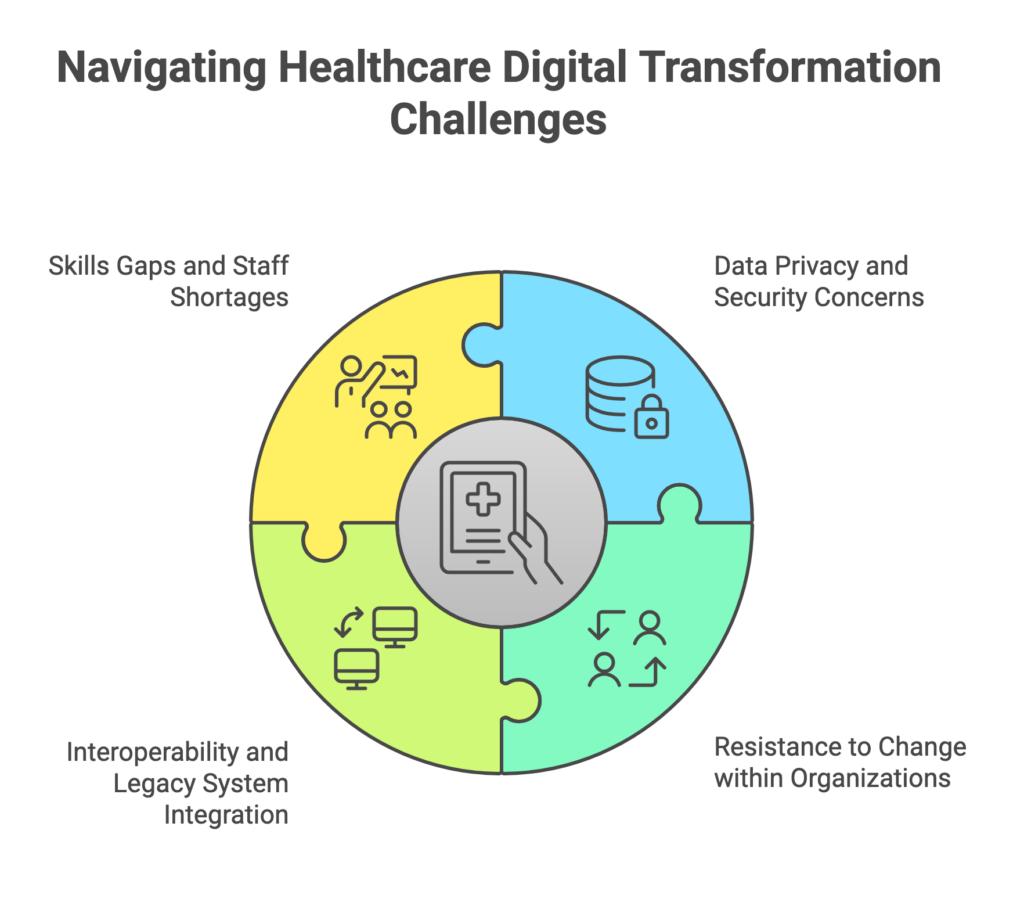
Data Privacy and Security Concerns
Healthcare deals with highly sensitive patient data. Digital systems, if not secured, can be vulnerable to cyberattacks, risking:
- Data breaches exposing personal health information
- Compliance violations leading to hefty fines
- Loss of patient trust and reputational damage
Implementing robust cybersecurity frameworks, encryption, and continuous monitoring is non-negotiable for digital health systems.
Resistance to Change within Organizations
Healthcare has traditionally been conservative in adopting new technologies. Reasons for resistance include:
- Fear of disrupting established workflows
- Lack of digital literacy among staff
- Concerns about technology reliability during critical care situations
Change management, leadership support, and comprehensive staff training are essential to overcome this barrier.
Interoperability and Legacy System Integration
Most healthcare organizations run on legacy systems that do not integrate easily with modern digital applications. Challenges include:
- Data silos are hindering unified patient views
- Incompatibility with new software or cloud platforms
- High costs and risks are associated with migrating from outdated systems
Adopting interoperability standards like HL7 FHIR and working with experienced technology partners can mitigate these challenges.
Skills Gaps and Staff Shortages
Digital transformation requires staff to be digitally proficient. However, many healthcare professionals:
- Lack of training in new digital tools and platforms
- Feel overwhelmed by technological complexity, which affects adoption rates
Continuous upskilling programs and user-friendly solutions can bridge the skills gap and enhance digital confidence among healthcare staff.
Successful Cases of Digital Transformation in Healthcare
1. Infrastructure Optimization and Data Management in Healthcare
Challenge
A health tech company came with outdated infrastructure that hindered efficient data management and slowed down critical operations. The existing system was not scalable and faced frequent downtimes, affecting the overall patient care experience.
Solution
Gart Solutions implemented a comprehensive infrastructure optimization strategy, including:
- Modernizing legacy systems to enhance speed and scalability
- Integrating cloud solutions for seamless, secure data management
- Ensuring HIPAA compliance for patient data security
- Enabling dynamic scaling to meet demand spikes efficiently
Impact
Faster data access, reduced downtimes, improved operational efficiency, and enhanced patient experiences.
Learn details from the Case Study.
2. CI/CD Pipelines and Infrastructure for E-Health Platform
Challenge
An e-health platform aimed to accelerate their development process and improve the reliability of their applications. However, they faced significant challenges with manual deployments, which were time-consuming and error-prone, leading to inconsistent performance and delayed updates.
Solution
Gart Solutions designed and implemented automated CI/CD (Continuous Integration/Continuous Deployment) pipelines tailored to the platform’s unique architecture.
Key implementation steps included:
- Automated Build and Testing Pipelines:
Code commits automatically triggered builds, testing suites, and static code analysis to catch bugs early. - Infrastructure Optimization:
Upgraded and containerized infrastructure to support CI/CD operations efficiently with Kubernetes orchestration for scalability. - Deployment Automation:
Introduced automated deployment scripts for seamless rollout of features across production and staging environments without downtime. - Monitoring and Rollback Strategies:
Integrated real-time monitoring tools with automated rollback protocols to ensure rapid issue remediation in case of deployment failures.
Impact
- Reduced deployment times from days to hours
- Significantly minimized human errors, enhancing application stability
- Improved development velocity, allowing frequent feature releases
- Increased user satisfaction due to faster bug fixes and feature updates
This case demonstrates that CI/CD pipelines aren’t just DevOps best practices – they are strategic enablers of digital agility in healthcare platforms, ensuring compliance, security, and innovation at scale.
Struggling with digital transformation for your healthcare project? Get expert guidance and IT Consultancy for your project free of charge. “Quick wins” – guaranteed. Contact Us.
How Digital Transformation Enhances Patient Experience
Telehealth and Remote Consultations
Imagine consulting your doctor while sipping coffee at home, with prescriptions emailed within minutes. That’s the new healthcare reality.
Telehealth is among the most impactful transformations in healthcare, enabling:
- Remote Consultations: Patients consult doctors without visiting clinics, saving time, reducing exposure to infections, and increasing accessibility for remote populations.
- Mental Health Services: Telepsychiatry platforms provide discreet, accessible therapy sessions, crucial in an era of rising mental health challenges.
- Chronic Disease Management: Regular remote check-ins for diabetes, hypertension, and other chronic conditions enable proactive care, preventing complications and hospital admissions.
During the pandemic, telehealth usage surged by over 154% compared to pre-pandemic levels (CDC data) and continues to grow as patients demand convenience and digital-first care experiences.
Personalized Medicine and AI Diagnostics
Digital transformation enables hyper-personalized treatments tailored to individual patient profiles by leveraging:
- AI Diagnostics:
AI algorithms analyze radiology images, blood tests, and genetic data to detect diseases earlier than traditional methods. For example, IBM Watson Health analyzes patient records to recommend tailored treatment options for oncologists. - Genomic Medicine:
Advances in data processing allow healthcare providers to customize medications and treatments based on patient genetics, enhancing efficacy and minimizing side effects. - Predictive Analytics:
Big data analytics predict patient risks, enabling early interventions for conditions like sepsis, cardiac events, or diabetic complications.
Patients no longer experience generic treatment plans but benefit from precision medicine designed for their unique biological and lifestyle factors, resulting in improved outcomes and satisfaction.
Conclusion
Healthcare organizations understand that digital transformation is crucial for enhancing healthcare services and strengthening patient relationships. Beyond technology investments, this transformation necessitates a shift in organizational culture and employee engagement, requiring enterprise-wide involvement.
Leading health organizations are adopting six key strategies to advance digitally:
- Establish digital leadership and governance aligned with business strategies.
- Cultivate a digital culture supported by leadership at all organizational levels.
- Develop next-generation talent with a focus on workforce quality and quantity.
- Integrate cybersecurity at all stages for robust risk management.
- Emphasize flexibility and scalability to adapt to evolving technologies.
- Implement measurable, accountable KPIs to track the success of digital initiatives.
Successfully navigating digital transformation in healthcare requires expertise and a business-first approach of IT Consulting.
Gart Solutions can guide healthcare providers through the process of Digital Transformation, accelerating the adoption of digital healthcare technologies and improvement of patient outcomes.
Contact Gart today to learn more about how we can help you solve the challenges of digital transformation in healthcare.
See how we can help to overcome your challenges

